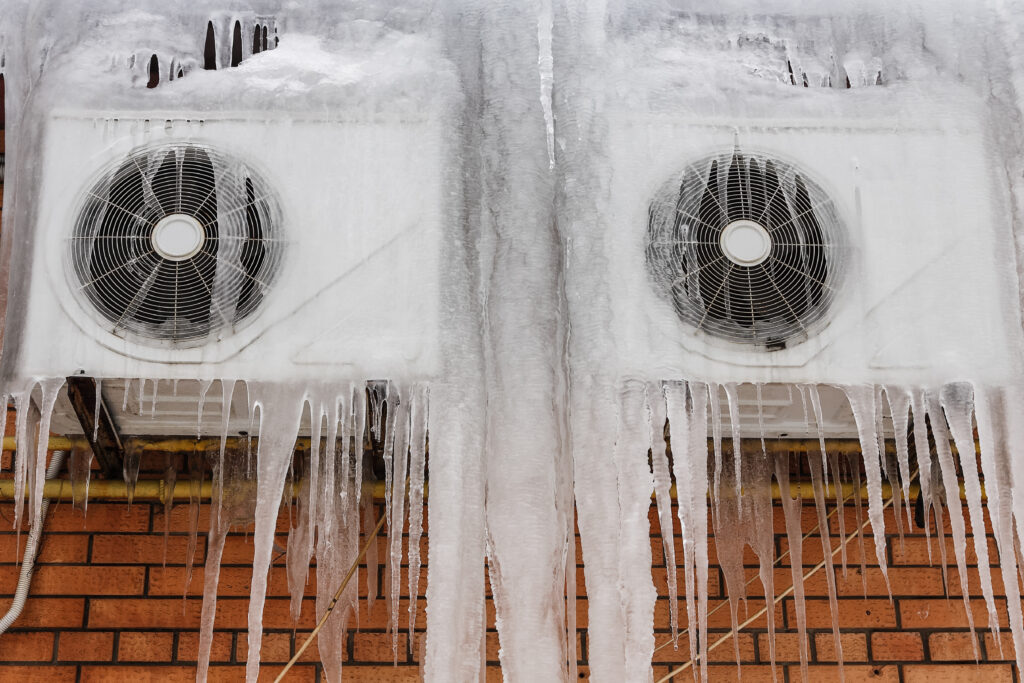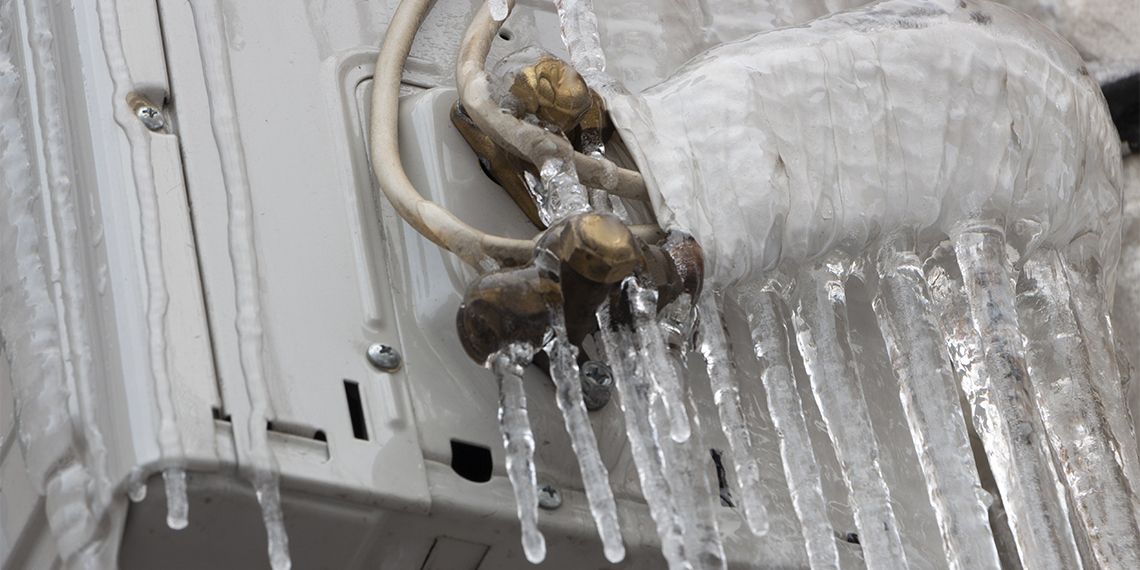Tips for Thawing a Frozen AC Pipe - Restoring Proper Operation
Tips for Thawing a Frozen AC Pipe - Restoring Proper Operation
Blog Article
Here down the page you will find lots of very good information pertaining to Have a Frozen AC Line? Here’s How to Fix It.

Introduction
Discovering that your air conditioner pipeline is frozen can be concerning, especially during warm summertime when you rely on your a/c the most. Understanding what to do in such a scenario is vital to prevent additional damages to your cooling system and guarantee your convenience indoors.
Understanding the Causes
Several elements can add to the freezing of an AC pipeline. Recognizing these reasons can aid you address the issue properly.
Absence of Airflow
One common reason for an icy AC pipe is inadequate air flow. When the air flow over the evaporator coil is limited, it can create the coil to go down below freezing temperature level, bring about ice formation on the pipe.
Reduced Refrigerant Levels
Not enough refrigerant degrees in your AC system can additionally lead to a frozen pipe. Reduced cooling agent levels can trigger the pressure in the system to go down, resulting in the cold of dampness on the evaporator coil.
Cold Weather Conditions
In chillier environments, freezing temperature levels outside can add to the cold of air conditioner pipes. If your a/c device is not correctly insulated or if there are leaks in the ductwork, cold air can penetrate the system, creating the pipeline to ice up.
Dirty Air Filters
Filthy or stopped up air filters can restrict airflow in your air conditioning system, leading to different issues, including an icy pipeline. It's important to change or cleanse your air filters frequently to guarantee correct air movement and protect against ice buildup.
Indications of a Frozen AC Pipe
Identifying the indicators of an icy air conditioning pipeline is essential for punctual activity.
Reduced Airflow
If you observe a substantial decrease in air flow from your vents, it could indicate a frozen pipeline.
Ice Buildup on the Pipe
Noticeable ice accumulation on the cooling agent line or the evaporator coil is a clear indicator of a frozen air conditioner pipe.
Odd Sounds from the Unit
Uncommon noises, such as hissing or gurgling, coming from your AC device can signify that there's ice existing on the pipe.
Immediate Actions to Take
When confronted with an icy AC pipe, it's vital to act rapidly to stop further damages to your cooling system.
Shutting off the air conditioning
The initial step is to switch off your air conditioning unit to avoid the system from running and intensifying the issue.
Looking for Blockages
Inspect the area around the interior system for any type of blockages that may be obstructing air movement, such as furnishings or curtains.
Thawing the Pipe
You can utilize gentle techniques like positioning towels taken in cozy water around the icy pipe to aid thaw it slowly.
Preventive Measures
Taking safety nets can help stay clear of future occurrences of a frozen air conditioner pipe.
Normal Maintenance Checks
Schedule routine maintenance checks with an expert HVAC professional to ensure that your a/c system is running efficiently.
Changing Air Filters
Consistently change or cleanse your air filters to prevent air flow limitations and maintain optimal performance.
Insulating Exposed Pipes
If your air conditioner pipelines are exposed to cool temperature levels, take into consideration shielding them to prevent freezing during cold weather.
Seeking Professional Help
If DIY methods stop working to deal with the problem or if you're unclear concerning how to continue, it's best to seek aid from a certified HVAC professional.
When DIY Methods Fail
If your attempts to thaw the pipe or address other issues are unsuccessful, it's time to hire an expert.
Value of Hiring a Professional HVAC Technician
A qualified HVAC professional has the know-how and tools needed to diagnose and fix concerns with your air conditioning system safely and efficiently.
Conclusion
Managing an icy air conditioning pipe can be an irritating experience, but recognizing exactly how to respond can assist lessen damages and restore convenience to your home. By recognizing the causes, recognizing the indicators, and taking timely action, you can successfully address the concern and prevent future occurrences.
Frozen AC Line: Why It Happens & What To Do About It
A frozen AC line can be a rather peculiar sight in a place like Phoenix, Arizona where nothing ever freezes. In this post, we’ll discuss what makes an air conditioner line frozen – and what you can do about it.
Dirty Air Filters
Did you know that you should be cleaning or replacing your air filters on a monthly basis? Failing to do this can result in airflow issues that, in turn, cause your evaporator coils and lines to freeze over. You’ll notice a buildup of ice on both components, although the buildup on your pipes will, of course, be more evident unless you open your air condition up to reveal the coils.
What To Do About It
Give your air filter a good cleaning if it’s reusable. If not, replace the filter outright. Next, switch your air conditioner’s fan setting on and leave it there for 2-3 hours. This will draw warm air in, helping to thaw your evaporator coil. You can also check out this article for some tips on cleaning the coils themselves if you’d like to speed the process up. Before you switch the unit back to its normal state, make sure the supply vents are completely unobstructed and free of dust or other debris.
If you keep having this issue even after replacing your filters regularly, contact a local HVAC repair company and have them inspect your evaporator coil, ductwork, and any other components that may be at fault. If you live in the Phoenix, Arizona area, give American Home Water and Air a call.
Low Refrigerant Levels/Leakage
What To Do About It
Contrary to what air conditioner “recharge” companies often tell their clients about refrigerant, it should never need to be simply refilled. You see, refrigerant runs in what experts refer to as a “closed loop.” Refrigerant really shouldn’t be leaving that loop. If it is, you’ve got a leak.
Paying someone to come and pump more refrigerant into your system (aka “recharge” it) isn’t the solution. Doing that will simply kick the can down the road. Besides, refrigerant leaks can be harmful to the environment and people in your home.
Rather, you need to take care of the leak with the help of a technician. Check out this article for some more information about dealing with air conditioners that are leaking refrigerant. Before you contact a technician, switch your thermostat to the off position. Then, switch the fan setting on and let it run for 2-3 hours so the unit can thaw.
Improper Temperature Setting
Improper temperature settings can also cause a drop in your air conditioner’s pressure. What many people don’t realize is that air conditioners are actually designed to run when temperatures have fallen above roughly 60 degrees Fahrenheit. If you run the unit when it’s cold outside, you’ll run into many issues, including frozen components.

As a fervent person who reads about Have a Frozen AC Line? Here’s How to Fix It, I figured sharing that section was a good idea. Feel free to take the time to promote this entry if you enjoyed reading it. We cherish reading our article about How can I fix an air conditioner’s frozen pipe?.
At This Website Report this page